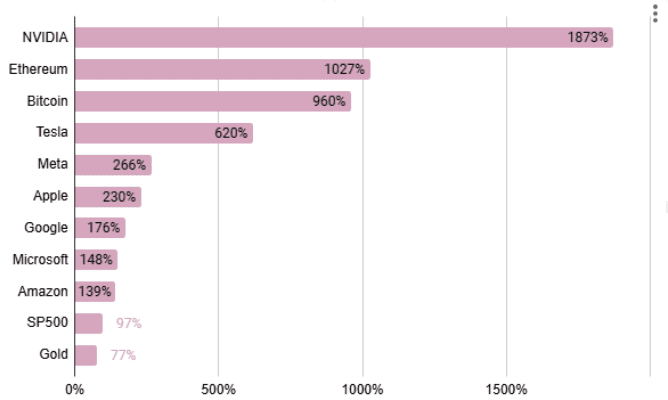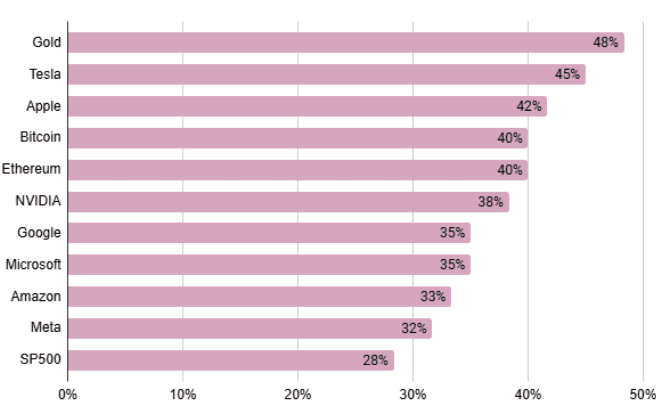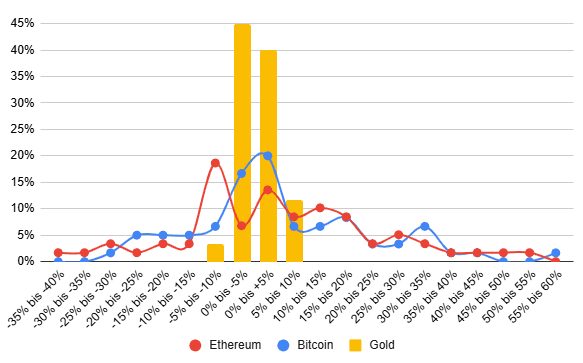The Best Investments in 2025 – Which Investments to Keep an Eye on?

Which investments performed best over the past 5 years? A data-based look at returns, risk, and the smartest investments in 2025.
Whether precious metals, stocks, real estate, farmland, art, ETFs, fixed deposits, or bonds – the options for investing money are diverse. But which ones are truly the best for building wealth?
Every investor looking to invest their capital wisely faces this question.
While individual preferences may differ, most people share the same goal:
A return as high as possible with as little risk as possible.
How We Evaluated the Best Investments in 2025
Before diving into the best investments of 2025, let's take a look at our evaluation method.
There is no such thing as the perfect investment – it depends on personal preferences, market availability, individual financial goals and many other factors.
However, there is a general rule of thumb: A good investment offers a balanced ratio of return to risk.
In other words, the best asset should generate high returns while minimizing the risk of losses.
For our study, we focused on some of the world's most traded asset classes and analyzed how their returns and risks have evolved over the past five years.
The Asset Classes We Analyzed
The analyzed assets include:
- Gold
- S&P 500 (US stock index)
- Bitcoin & Ethereum
- The "Magnificent 7" (stocks of Google, Apple, Meta, Nvidia, Amazon, Microsoft, and Tesla)
For each of these asset classes, we calculated the average monthly prices over the past five years and evaluated how frequently gains or losses occurred.
We divided fluctuations into 5% intervals to provide a precise assessment of the return-risk ratio.
Since all price developments are listed in US dollars, the results are internationally comparable.
What Our Study Tells You
Our analysis provides insights into how often gains and losses occurred in each asset class – and how significant they were.
This allowed us to identify which investments historically offered an attractive balance between return and risk.
Important: This study is based on historical data from the past five years (February 2020 to February 2025) and therefore does not provide a reliable forecast for the future. However, it does offer valuable insights about the assets' past attractiveness.
All Investments Generated Attractive Returns

Without a doubt, investors who had invested in NVIDIA, Ethereum, or Bitcoin in the last five years were among the biggest winners.
An investor who had invested $1,000 in each of these three assets five years ago and held their investment would have achieved a pre-tax profit of nearly $38,600 today.
However, other investments also significantly outperformed inflation.
Here is an overview of how much pre-tax profits an investor would have made with a $1,000 investment in the following assets:
- Tesla: +$6,202
- Meta: +$2,660
- Apple: +$2,304
- Google: +$1,763
- Microsoft: +$1,481
- Amazon: +$1,390
- S&P 500: +$972
- Gold: +$768
These numbers impressively demonstrate what kinds of returns were possible in recent years – provided one invested in the right asset classes and was willing to hold when things got volatile.
How Often and How Significantly Did Prices Drop?

Not only the frequency of losses but also their extent (more on that shortly) varied greatly among different asset classes.
Our analysis shows that the broad-based US benchmark index S&P 500 experienced losses in relatively few months:
- S&P 500: 17/60 months (28%)
- Meta: 19/60 months (32%)
- Amazon: 20/60 months (33%)
- Microsoft: 21/60 months (35%)
- Google: 21/60 months (35%)
- NVIDIA: 23/60 months (38%)
- Ethereum: 24/60 months (40%)
- Bitcoin: 24/60 months (40%)
- Apple: 25/60 months (42%)
- Tesla: 27/60 months (45%)
- Gold: 29/60 months (48%)
The Severity of Losses is What Really Matters
At first glance, one might think that a higher number of loss months automatically means greater risk.
However, this alone is does not tell a lot about the actual volatility of an asset class.
What matters is not just how often an investment declines, but first and foremost how severely it loses value.
For example, Gold experienced moderate declines of up to -5% in negative months. Bitcoin and Ethereum, on the other hand, saw dramatic crashes of up to -37%.
Risk Profiles Compared
The following graphic illustrates the different risk profiles by showing the frequency of various price losses in proportion:

Here, it becomes clear that gold was a relatively stable investment, as 97% of its price movements ranged between -5% and +10%.
In contrast, cryptocurrencies exhibited significantly higher risk:
- Ethereum: 12% of losses ranged between -15% and -37%
- Bitcoin: 12% of losses ranged between -15% and -25%
Here are the largest monthly losses of each asset:
- Ethereum: -37%
- Meta: -28%
- NVIDIA: -26%
- Amazon: -26%
- Tesla: -26%
- Bitcoin: -25%
- Google: -14%
- S&P 500: -14%
- Microsoft: -12%
- Apple: -11%
- Gold: -5%
These numbers make it clear: Not all losses are equal. An investment can experience frequent declines but only minor losses – or fall less often but suffer major crashes, which, in the end, has more dramatic consequences.
The actual risk is a combination of frequency and severity of losses.
Of all the investments analyzed, gold was the most stable asset 🥇
Conclusion: The Best Investment in 2025
Our analysis shows that there is no single best investment – the optimal choice depends on individual goals, risk tolerance, and market developments. However, based on historical data, certain trends can be identified.
Top Performers in Terms of Returns: NVIDIA, Bitcoin & Ethereum
Looking at pure returns over the past five years, NVIDIA, Bitcoin, and Ethereum stood out. These investments offered the highest profit potential but also came with significant downside risks (-37% maximum monthly losses for Ethereum).
Stable Growth: Tech Stocks & S&P 500
Big Tech stocks and the S&P 500, on the other hand,proved to be more solid performers in comparison.
- Meta: +$2,660
- Apple: +$2,304
- Google: +$1,763
- Microsoft: +$1,481
- Amazon: +$1,390
- S&P 500: +$972
The S&P 500 was the most stable option, with the fewest months of losses (only 17 out of 60).
Gold as a Safe and Stable Option
Gold was the most stable investment in the study. While its returns were lower than crypto and the big tech stocks (+$768 per $1,000 investment), it had several strong points to consider when making an investment:
- Comparably small losses: Never more than -5%
- Low volatility: 97% of movements were between -5% and +10%
- Tax Benefits: Here, we have written a detailed tax guide.
- Comparison with Other Stable Investments: Land and artwork
Given its “defensive” properties, gold may be an excellent option for diversifying risk and preserving wealth long-term.
GOLD AVENUE offers a wide selection of LBMA-certified gold bars and coins.
With our innovative storage solution, you can store your products free of charge and fully insured for deposits up to $10,000. Additionally, any products purchased from us can be resold at the current metal value and without commission at any time.